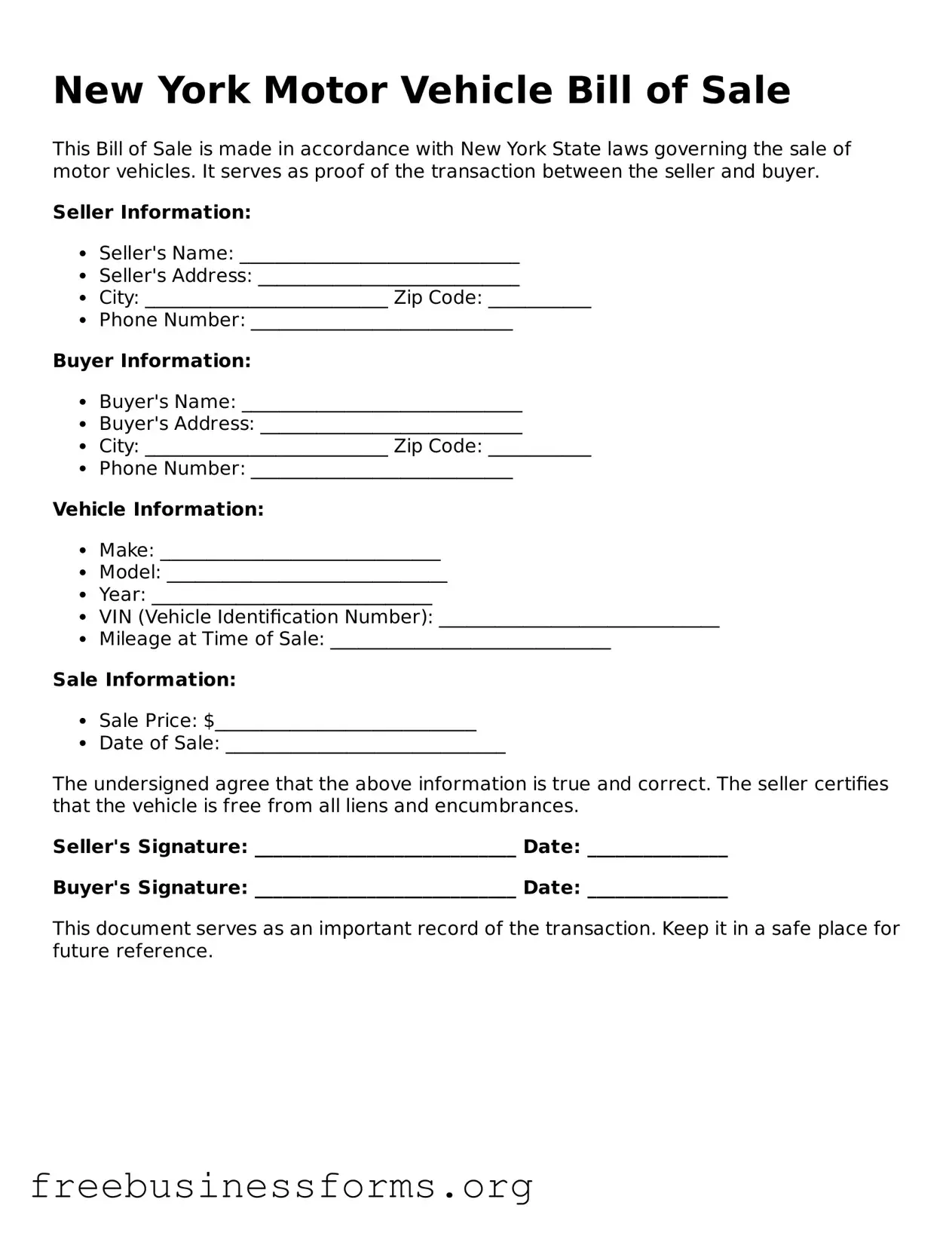New York Motor Vehicle Bill of Sale
This Bill of Sale is made in accordance with New York State laws governing the sale of motor vehicles. It serves as proof of the transaction between the seller and buyer.
Seller Information:
- Seller's Name: ______________________________
- Seller's Address: ____________________________
- City: __________________________ Zip Code: ___________
- Phone Number: ____________________________
Buyer Information:
- Buyer's Name: ______________________________
- Buyer's Address: ____________________________
- City: __________________________ Zip Code: ___________
- Phone Number: ____________________________
Vehicle Information:
- Make: ______________________________
- Model: ______________________________
- Year: ______________________________
- VIN (Vehicle Identification Number): ______________________________
- Mileage at Time of Sale: ______________________________
Sale Information:
- Sale Price: $____________________________
- Date of Sale: ______________________________
The undersigned agree that the above information is true and correct. The seller certifies that the vehicle is free from all liens and encumbrances.
Seller's Signature: ____________________________ Date: _______________
Buyer's Signature: ____________________________ Date: _______________
This document serves as an important record of the transaction. Keep it in a safe place for future reference.
